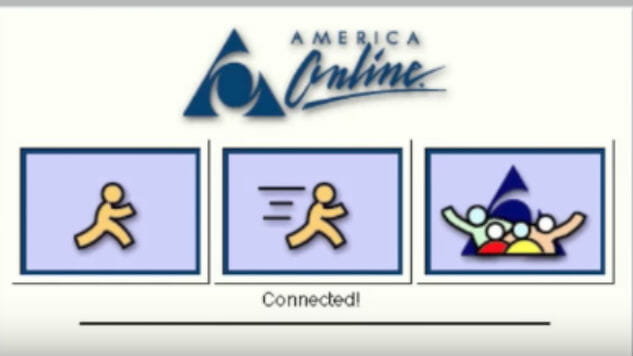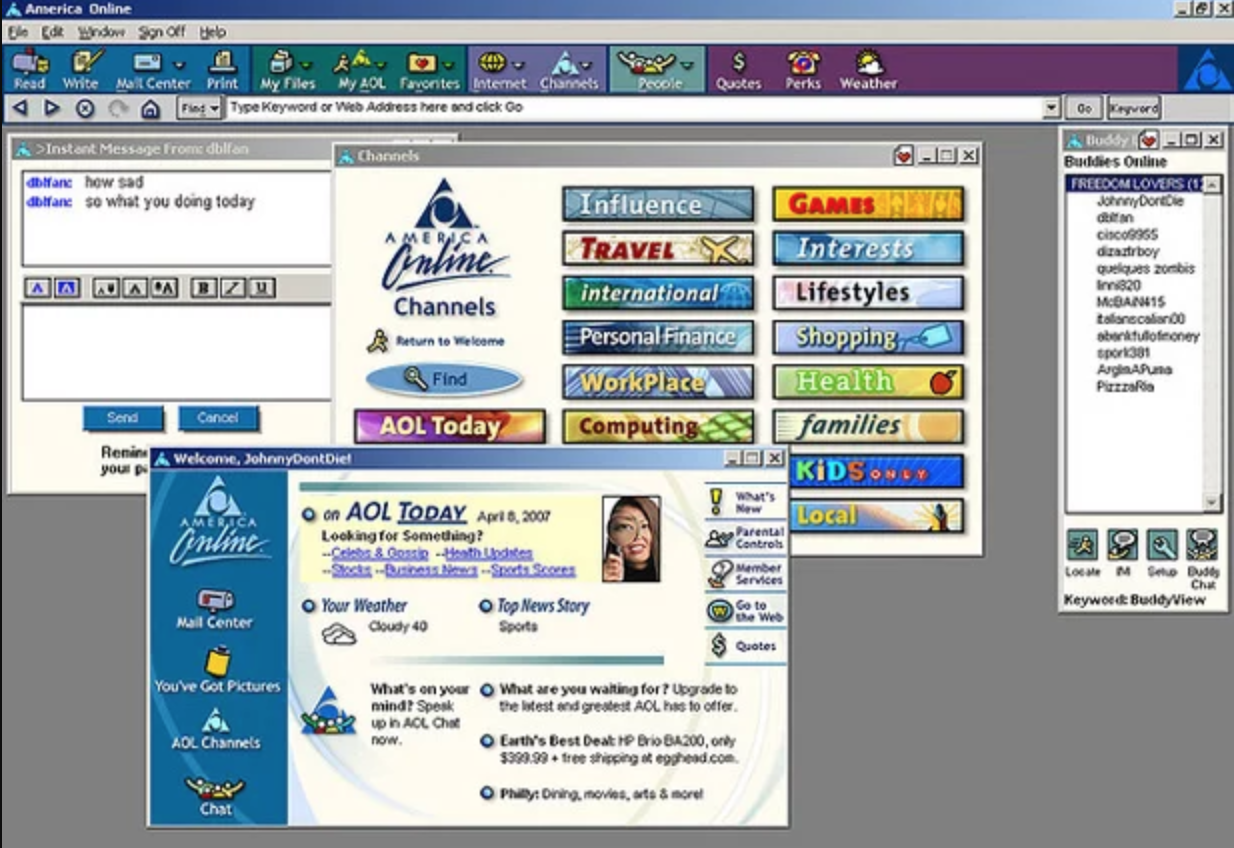
Before I had a phone and before I’d ever sent a text message, I used AOL Instant Messenger.
It was an experience of a very specific generation—kids who invested hours of adolescent life in things like screen names, emoticons, away messages, online flirting, profiles and acronyms. It’s the generation of TTYL, AFK, G2G and ROFL. They pioneered chat shorthand, in the same way that the baby boomer generation before them pioneered phone etiquette.
I can’t say for sure that we invented all that, nor can I say we used the power of internet communication responsibly. What I can say is that the kids that grew up with AIM directly shaped the future of communication into what we see today.
AOL announced recently that its instant messaging service would be closing down on December 15 much to the chagrin of millennials around the world. It shouldn’t come as much of a surprise though—after all, AOL has been a digital media company as a subdivision of Verizon for years now. It owns a family of media brands including The Huffington Post, Moviefone, Engadget and TechCrunch. Instant messaging has been the last thing on its mind for years and years.

I got access to dial-up 56k internet through American Online starting in middle school, right when I needed it most. At one point, AOL’s dial-up internet service was the primary way Americans got into the world wide web with up to 10 million users paying monthly. The grip that AOL had on the public’s access to the internet was astounding in the 1990s and early 2000s.
Along with its web portal, you got access to email, instant messenger, and a number of other web services. It had its fair share of competitors in MSN Messenger or ICQ, but AIM held the dominant share of the instant messaging market for much of the 2000s. Despite all of the money and acclaim AOL garnered during those years, it’s been a long time since AOL has been a household name.
As internet literacy and access high-speed connections increased, the need for a middle-man between users and ISPs decreased significantly. In addition, the birth of free online services from Yahoo and Google really changed the value proposition of the all-in-one AOL bundle.
So while the days of AIM are long gone, instant messaging as a concept hasn’t gone anywhere. We’ve got things like Facebook Messenger, Slack, WhatsApp, and—perhaps most successful—iMessage. As much as we all predicted that video chats and social media would be the end of instant messaging, text messaging is still the primary way we communicate over the internet. Even platforms like Twitter and Instagram have come to include Direct Message services to keep private, text chats alive.
Facebook, in particular, has been investing heavily in the future of instant messaging. Facebook Messenger become a full-fledged platform on its own, separating from the Facebook app, and added features like peer-to-peer payment and games. Even Zuck himself was waxing poetic last weekend on the impact of AIM on both his personal life and what he’s been trying to do with Facebook:

It’s hard to look back at the history of the internet and not see AIM as a crucial part of the evolution. While AIM is certainly on its death bed, its spirit will certainly live on. Every time you use a smiley emoticon, type “lol”, send a Slack message or send a simple text message, the continuation of AIM culture continues to have its impact. We even have AIM to thank for the birth of modern-day chatbots.
But more than that, it’s hard to look at the daily lives of an entire generation of Millennials and Generation Z kids and not see how instant messaging changed everything—for good or for worse. Despite all the new ways we have to communicate at our fingertips, instant messaging is one that isn’t going anywhere any time soon.